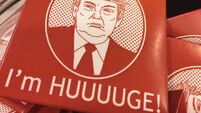Dollar falls against euro
A drop in the amount of stocks and bonds bought by foreigners may make it difficult for the US to finance the deficit in its current account, the broadest measure of trade and investment. The Treasury Department said foreigners bought a net $4.19 billion in September, down from $49.9 billion in August and the smallest since $1.17 billion in September 1998.
“It’s the hardest evidence yet the US current account deficit has finally become unsustainable and the foreign appetite for US securities has finally fallen short," said Michael Woolfolk, a currency strategist at the Bank of New York, the third-largest New York-based bank.
There is “a dependence on increasing inflows just to keep the dollar steady.’ As of 10:53am in New York, the dollar had dropped to $1.1885 per euro from $1.1749 yesterday, its weakest level since June, and fell to $1.1911. The dollar’s record low is $1.1933 per euro, reached on May 27. It fell to 108.37 yen per dollar compared with 108.92.
The dollar’s decline triggered previously set orders to sell the currency at specific levels, such as $1.1810 and then $1.1845 per euro, according to Chris Melendez, president of Tempest Asset Management, a hedge fund in Irvine, California. The next level is $1.1933, he said.
The deficit in the current account held at a record $138.7 billion in the second quarter.
The US has had to borrow more money overseas to satisfy demand for imported goods and services to finance investment not covered by US savings.
The dollar remained lower versus the euro and yen after a US Labour Department report showed the consumer price index held steady in October after rising 0.3% in September.
Excluding food and energy costs, the so-called core index rose 0.2% after a 0.1% increase in the prior month.
The dollar had its biggest weekly loss in six months last week.











